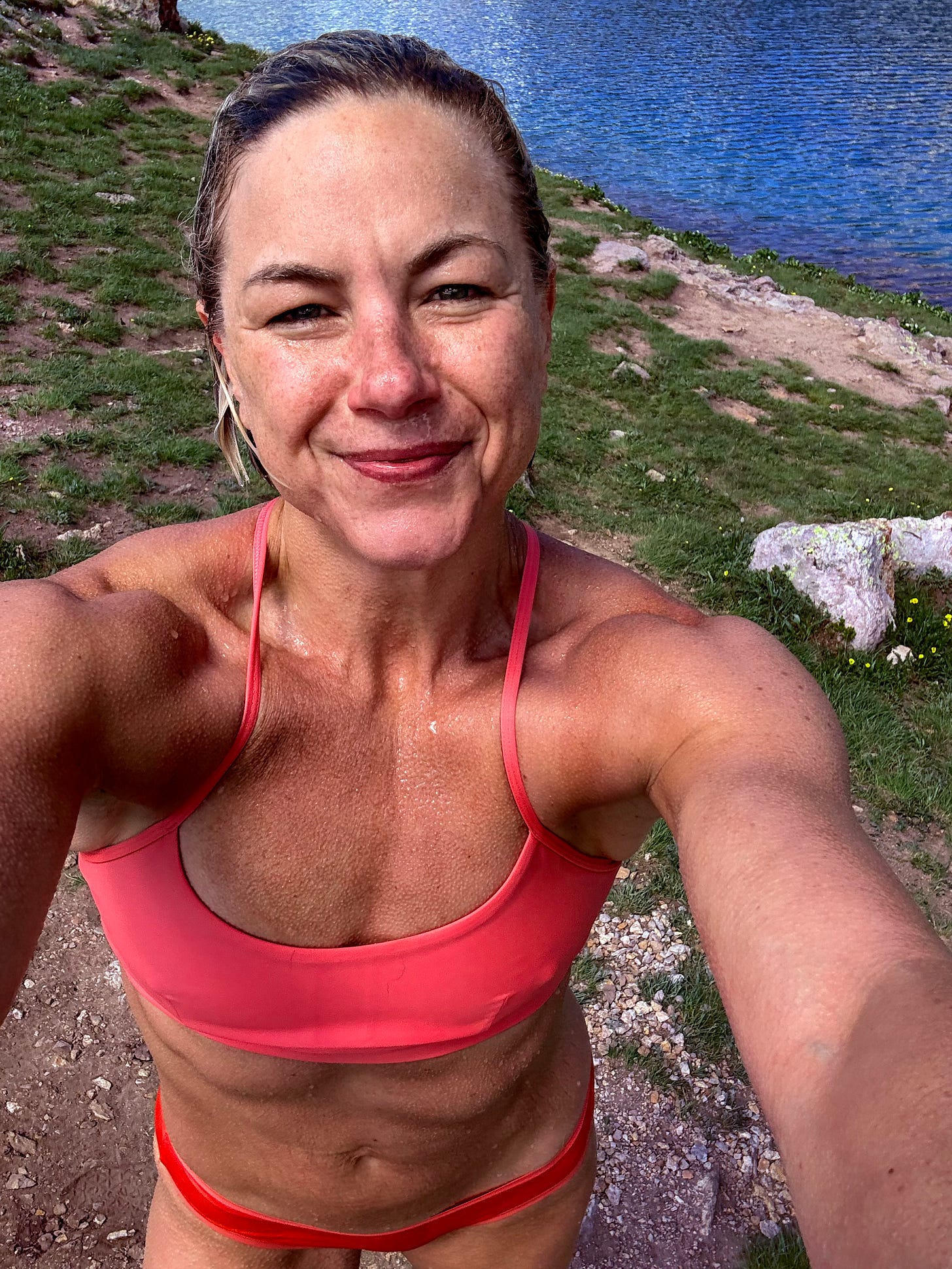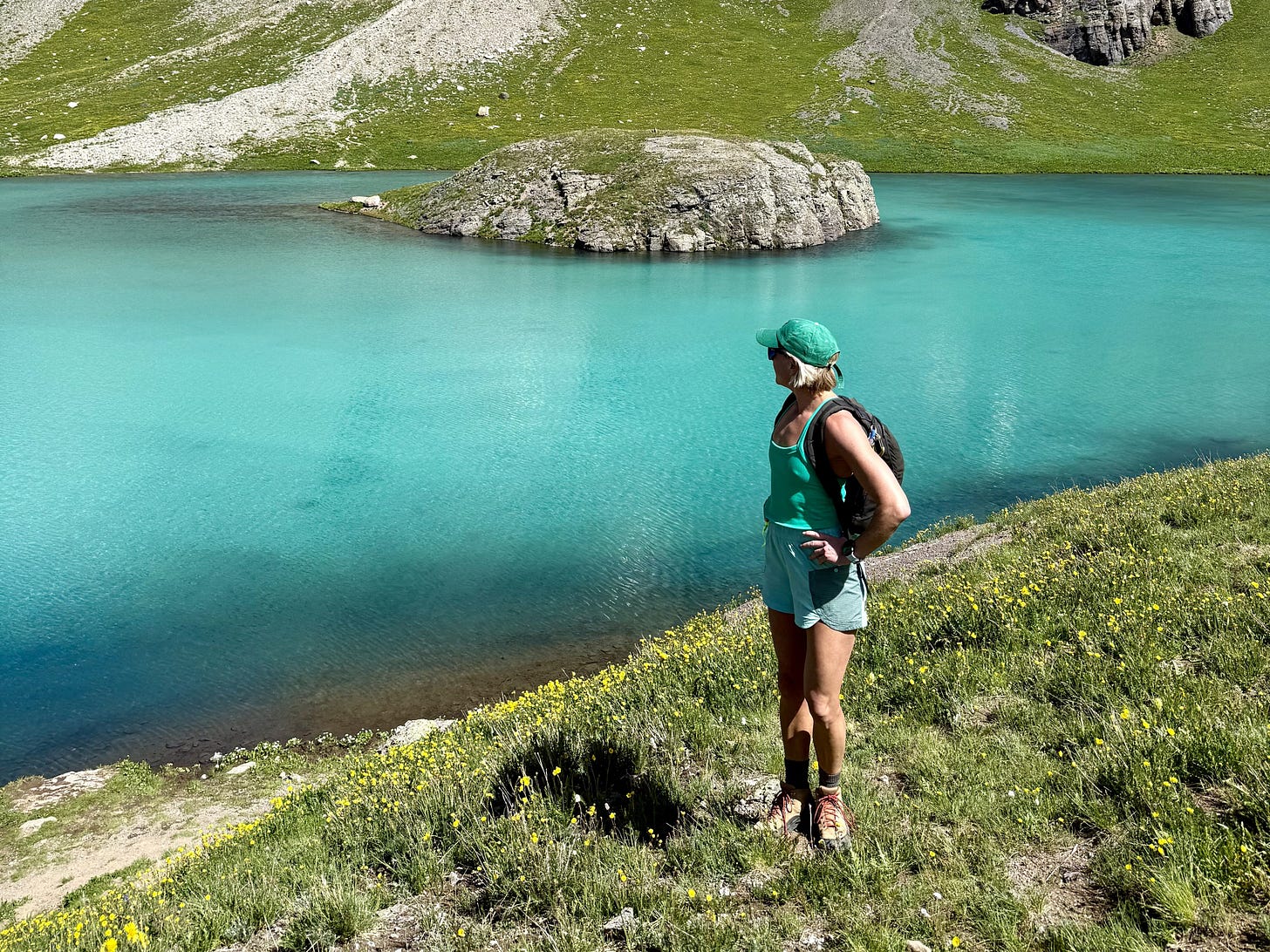The Truth About Electrolytes And Your Energy Levels
Exactly how to power up your hydration, hormones, effort, and recovery.
Some hikes stick with you long after you take your boots off. Ice Lake in southwest Colorado is one of those for me.
The challenging 9.5-mile round-trip (if you climb up to Island Lake too—which I did) winds through alpine forests, icy stream crossings, wildflower-painted meadows, and steep stretches of loose rock and boulder fields, rising more than 3,000 feet. I was lit up the entire ascent. Strong. Grounded. Grateful.
And then—high above the treeline, legs aching and air as thin as nothingness—the landscape opened up and stole my breath. My boots crunched toward the edge of a glacial lake shimmering in impossible shades of turquoise and jade, cradled by jagged peaks and a silence so pure it felt sacred.
I enjoyed my PB&J at the top, then LIVED A LITTLE and dove in, but that’s a story for another day.
Soon after beginning my descent, I felt a strange tightness in my hands. When I brought them up to eye level, I could see why: my fingers were swollen, and my hands looked stiff. Even my wrists were bloated—I had to loosen the band on my Apple Watch Ultra. It wasn’t painful, just…weird.

I tried shaking out my hands, stretching and massaging them, raising them over my head. Nothing changed. I was not worried because I didn’t have any other symptoms, such as light headedness, nausea, or a headache. (And before you ask! Yes, I’d taken precautions: it’s a well-marked trail I’ve traversed before, there were plenty of other hikers out that morning, and I’d let my husband know where I was headed.)
Most of all, I was very curious. The science/health geek in me couldn’t wait to investigate what could be causing the swelling as soon as I was home with WiFi.
One possibility? I was reacting to the shock of altitude. After all, I’d boldly set off with only 60 hours of acclimation from sea level under my belt.
But after researching, I suspect that my swollen extremities were connected to the way I’d been fueling, or not fueling, all day. More specifically: I’d made a rookie mistake. I drank water throughout the hike—consuming a giant CamelBak bladder of water over my five hour adventure—but didn’t replenish any of the minerals I was sweating out…
The Electrolyte Boom Is Real
Over July 4th in steamy Florida, I played tennis every morning with a group of 10 sweaty and motivated 40–60ish year old adults. Almost everyone in my clinic had some kind of electrolyte powder in their water bottle, and wanted to talk about their preferred brand. This wasn’t a hardcore endurance crew—just everyday folks being proactive about how they hydrate.
Look around and you’ll see the cultural and commercial surge: people dropping LMNT into their Yeti tumblers before hot yoga, mixing Nuun into water bottles on the sidelines of youth sports games, throwing packets of DripDrop into their carry-ons before long-haul flights. Liquid I.V. is now a household name, stocked at Target and Costco. Pique launched a high-end, gut-friendly electrolyte powder in sleek packaging aimed squarely at wellness-savvy women. And newer brands like Waterboy and Re-Lyte are riding the wave too, targeting everyone from festival-goers to CrossFitters to longevity optimizers with their sleep stacks.
The global electrolyte drinks market is set to jump from $42 billion in 2025 to $62.6 billion by 2032. What began as a Gatorade-dominated space for sweaty teenagers and pro athletes is now a biohacking goldmine with products tailored for distance runners, perimenopausal women, and office workers trying to shake their afternoon slump.
There’s even a luxury angle now, with Sakara’s Beauty Drops and Moon Juice’s Mini Dew entering the chat sporting designer packaging, adaptogen blends, and mineral-rich “hydration rituals” that vibe more spa day than sports drink.
But just because it’s trendy doesn’t mean it’s fluff. These minerals are essential—literally. Your body can’t function without them. So what are they, really—and how do they impact energy, swelling, cramps, and recovery? Let’s break it down.
Keep reading with a 7-day free trial
Subscribe to Best Case Scenario to keep reading this post and get 7 days of free access to the full post archives.


